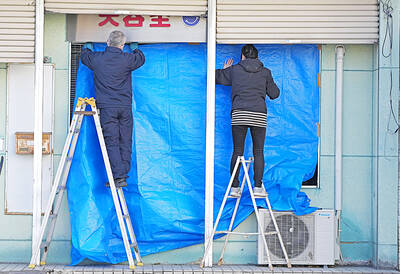The Chinese government linking the establishment of new air routes directly crossing the middle of the Taiwan Strait with the issue of Chinese tourists making transit stops in Taiwan has stalled recent negotiations for the latter.
China’s Taiwan Affairs Office Minister Zhang Zhijun (張志軍) agreed to make an effort to allow Chinese tourists to transit through Taiwan on their way to other countries when he first came to Taiwan in June last year, but the office brought up the issue of establishing new flight routes in November last year, saying that existing routes are too busy to allow new flights, citing air safety concerns.
China again broached the topic of “streamlining the flight routes” at recent cross-strait negotiations in Taipei to allow Chinese tourists to make transit stops in Taiwan.
A Taiwanese official said last month’s meeting between Mainland Affairs Council (MAC) Minister Andrew Hsia (夏立言) and Zhang resulted in a consensus that the two sides could make some preliminary agreements on technical issues concerning Chinese tourists by the end of this month, with a view to preparing for the implementation of the new measure in the second half of this year.
Due to China bringing the establishment of new flight routes back into the discussion, the MAC has been forced to announce the suspension of the measure’s implementation, saying it could no longer confirm the date of its commencement.
Direct flights between Taiwan and China began in 2008 after President Ma Ying-jeou (馬英九) took office. After a cross-strait meeting in November 2008, “the north air route,” or flight route R596, was established. Another cross-strait meeting of top officials in April 2009 resulted in the “second north air route” (B591) and the “south air route” (R200).
There are currently three direct air routes between the two sides, all of which have been established based on the principle of bypassing the center of the Taiwan Strait.
Flight route R596 travels north from Taiwan and veers left from the Taipei flight information region (FIR) to the Shanghai FIR, and is used for flights bound for Shanghai, Nanjing and Beijing.
Flight route B591 lies east of the existing north air route, and is used for flights to China’s northern and northeastern cities. The “south air route” heads south from Taiwan, turning from the Taipei FIR to the Guangzhou FIR, and is used for flights bound for China’s southern cities, such as Guangzhou.
China’s Xiamen, a short distance from Taiwan’s offshore Kinmen County, is among the destinations on the “south air route.” A person involved in the cross-strait negotiations said that a Chinese delegation once said that flights from Xiamen taking the “south air route” were a waste of time and fuel, and requested a direct flight crossing the Taiwan Strait to be known as the “Kinmen air route.”
China asked for new flight routes in 2009, saying the two sides should work on mutual military trust, and called on Taiwan to allow the establishment of a “middle air route” that crosses the center of the Taiwan Strait, which could increase the number of cross-strait flights from 200 to up to 800 per week.
The Ma administration rejected the proposal, and the MAC has reiterated this stance, citing national security concerns.

Taiwanese were praised for their composure after a video filmed by Taiwanese tourists capturing the moment a magnitude 7.5 earthquake struck Japan’s Aomori Prefecture went viral on social media. The video shows a hotel room shaking violently amid Monday’s quake, with objects falling to the ground. Two Taiwanese began filming with their mobile phones, while two others held the sides of a TV to prevent it from falling. When the shaking stopped, the pair calmly took down the TV and laid it flat on a tatami mat, the video shows. The video also captured the group talking about the safety of their companions bathing

US climber Alex Honnold is to attempt to scale Taipei 101 without a rope and harness in a live Netflix special on Jan. 24, the streaming platform announced on Wednesday. Accounting for the time difference, the two-hour broadcast of Honnold’s climb, called Skyscraper Live, is to air on Jan. 23 in the US, Netflix said in a statement. Honnold, 40, was the first person ever to free solo climb the 900m El Capitan rock formation in Yosemite National Park — a feat that was recorded and later made into the 2018 documentary film Free Solo. Netflix previewed Skyscraper Live in October, after videos

Starting on Jan. 1, YouBike riders must have insurance to use the service, and a six-month trial of NT$5 coupons under certain conditions would be implemented to balance bike shortages, a joint statement from transportation departments across Taipei, New Taipei City and Taoyuan announced yesterday. The rental bike system operator said that coupons would be offered to riders to rent bikes from full stations, for riders who take out an electric-assisted bike from a full station, and for riders who return a bike to an empty station. All riders with YouBike accounts are automatically eligible for the program, and each membership account

A classified Pentagon-produced, multiyear assessment — the Overmatch brief — highlighted unreported Chinese capabilities to destroy US military assets and identified US supply chain choke points, painting a disturbing picture of waning US military might, a New York Times editorial published on Monday said. US Secretary of Defense Pete Hegseth’s comments in November last year that “we lose every time” in Pentagon-conducted war games pitting the US against China further highlighted the uncertainty about the US’ capability to intervene in the event of a Chinese invasion of Taiwan. “It shows the Pentagon’s overreliance on expensive, vulnerable weapons as adversaries field cheap, technologically